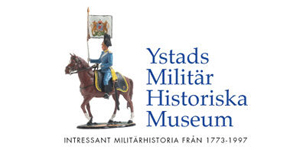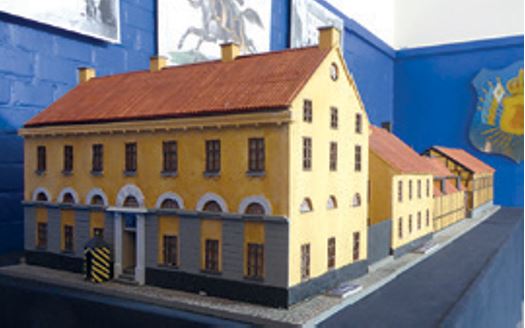Husartiden i Ystad 1773 – 1882
| Redan 1772 hade Svenska Husarregementet med sex skvadroner passerat hamnen i Ystad under förflyttningen från Rügen, till förläggningsorter längs Skånes och Hallands kuster. Vid den tiden var Vorpommern och Rügen i norra Tyskland en del av Sverige. 1773 förlades sedan en skvadron, Mörners Husarer, 50-100 man med hästar ur regementet (senare Kronprinsens Husarregemente [K7]) till staden. Husarerna var ett s.k. värvat regemente, dvs. soldaterna var i tjänst hela tiden. De inkvarterades hos borgerskapet och husägarna i staden. Notera att Ystads befolkning vid den tiden var ca 2.500 personer, samtidigt som husarerna med familjer var ca. 300 personer. Modellen visar de första stallarna för husarernas hästar. De byggdes vid Klostret under 1770-talet (14). 1791 förlades ytterligare en skvadron husarer i staden. På väggen ser vi en karta över Ystad år 1793 som visar staden vid tiden då husarerna etablerade sig i staden (15).1813 flyttade Ystaddelarna av Husarregementet [K 7] in i nya kaserner på Stora Östergatan. Till höger ser vi en modell av kasernerna (16). |
Vid sidan av sin sabel hade husaren en väska, s.k. sabeltaska, där han kunde förvara kartor, skrivna order etc. En sabeltaska och husarsabel ligger i montern (17).
Husarregementets nya kaserner på Stora Östergatan.Illustration av Kronprinsens Husarers standar med segernamnet Bornhöft 1813 (18). Bornhöft ligger i norra Tyskland och slaget där är senaste gången Sverige och Danmark drabbat samman i strid. Det är också senaste gången Sverige använt beridna förband i strid. |



